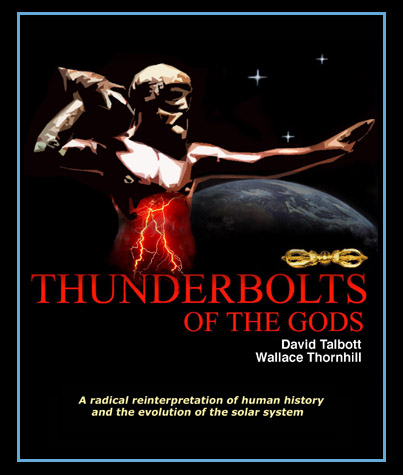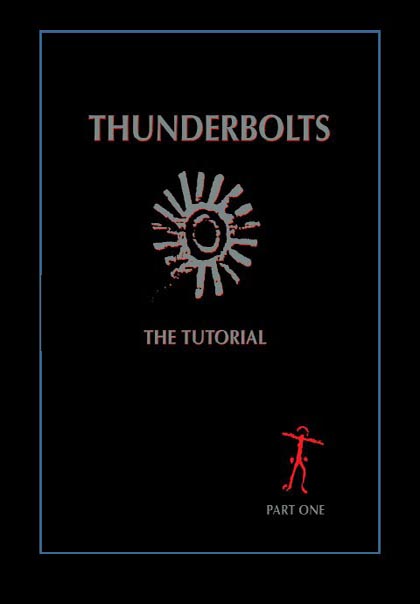
home •
about •
essential guide •
picture of the day •
thunderblogs •
news •
multimedia •
predictions •
products •
get involved •
contact


Credit: Rens van der Sluijs
pic of the day
archive
subject index
abstract
archive
Links:
Society for
Interdisciplinary
Studies

Thunderbolts of the Gods is a
108 page 8-1/2 x 11 full color monograph based on the life work of the two
authors--a revolutionary synthesis of comparative mythology and the
newly-discovered "Electric Universe".

The Monograph includes
an hour-long DVD introducing various aspects of the Electric
Universe explained by members of the Thunderbolts Group.
Dec 06, 2005
The Worship of Lightning
In the old religion of Vedic India, the vajrá was the powerful thunderbolt wielded by the storm god Indra in his momentous combat with the dragon Vritra. Such myths, of course, were rife in the ancient world, but what is striking is that Buddhist cultures still worship the lightning today on a massive scale, with entire sects and branches of theory devoted to its study. The above are modern examples of the kongō, the Japanese name of the object, as the central object of veneration in temples in modern-day Kyōtō and Kagawa, both in Japan.
Ancient mythological traditions are full of sacred weapons employed in the battles of the gods with demons and dragons. Like Indra, Zeus resorted to his famous keraunós to defeat Typhon and the Biblical Yahweh subjected Leviathan or Yamm with a similar device. But what is it about the vajrá and its counterparts in other cultures that guaranteed its persistence as a powerful theme even into the modern era?
No doubt the crucial factor here is the cosmogonic role of the weapon: more than the relatively modest lightning experienced today, the mythological thunderbolt possessed cosmic dimensions and played an essential part in the ‘creation of the world’. In ancient parlance, to subdue the dragon was to lay the foundations for the formation of the earth. The peculiar form of the vajrá, which is quite unlike the usual type of lightning, is fully explicable as a manifestation of the visible world axis during one of its most complex phases. As the Indologist, Govinda, has explained, the little sphere in the centre represented the ‘seed’ or ‘germ’ from which the universe was thought to have arisen and the two ‘lotus blossoms’ at the opposite ends symbolised the poles of the universe connected by the central axis mundi.
Lightning is one of the primary manifestations of plasma in the ionosphere and the atmosphere of the earth. It is intriguing, therefore, that the complex morphology displayed in the vajrá and other ancient forms of the thunderbolt is matched by laboratory experiments involving a high-energy z-pinch plasma discharge. This striking convergence poses the question if ancient societies could have correctly remembered some of the most complex stages of a real display of plasma in the sky: an enhanced aurora such as the one recently proposed by plasma physicist Anthony Peratt could well have produced just such a display.
Contributed by Rens van der Sluijs
EXECUTIVE EDITORS:
David Talbott, Wallace Thornhill
MANAGING EDITOR:
Mel Acheson
CONTRIBUTING EDITORS: Michael Armstrong, Dwardu Cardona, Ev Cochrane,
C.J. Ransom, Don Scott, Rens van der Sluijs, Ian Tresman
WEBMASTER: Michael Armstrong
Copyright 2005: thunderbolts.info